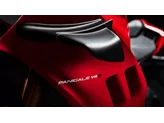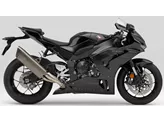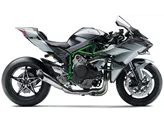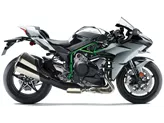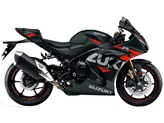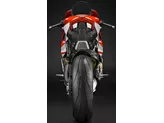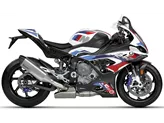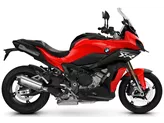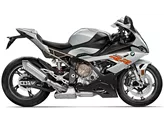BMW S 1000 RR 2020 vs. Kawasaki Ninja H2 2015

BMW S 1000 RR 2020

Kawasaki Ninja H2 2015
Overview - BMW S 1000 RR 2020 vs Kawasaki Ninja H2 2015
The BMW S 1000 RR 2020 and the Kawasaki Ninja H2 2015 are both powerful and high-performance supersport motorcycles. However, they have some differences in their technical specifications and strengths.
Starting with the technical specifications, both motorcycles have an inline engine type with four cylinders and four valves per cylinder. The BMW S 1000 RR has a larger displacement of 999cc compared to the Kawasaki Ninja H2's 998cc. The BMW also has a higher bore of 80mm compared to the Kawasaki's 76mm, while the Kawasaki has a longer stroke of 55mm compared to the BMW's 49.7mm.
In terms of engine power, the BMW S 1000 RR boasts 207 HP, while the Kawasaki Ninja H2 has 200 HP. The BMW also has a higher torque of 113 Nm compared to the Kawasaki's 133.5 Nm. However, the Kawasaki has a lower compression ratio of 8.5, indicating a lower level of engine efficiency compared to the BMW's 13.3 compression ratio.
Both motorcycles have adjustable front and rear suspensions, allowing riders to fine-tune their riding experience. The BMW S 1000 RR features an upside-down telescopic fork for the front suspension, while the Kawasaki Ninja H2 has a telescopic fork. The BMW also has a swing arm rear suspension, while the Kawasaki has a single swing arm.

BMW S 1000 RR 2020
In terms of chassis, the BMW S 1000 RR has an aluminum frame with a twin-tube, load-bearing engine design. On the other hand, the Kawasaki Ninja H2 features a steel frame with a tubular design.
Both motorcycles have double disk brakes at the front with radial technology, providing excellent stopping power. They also have the same front tire width of 120mm and diameter of 17 inches. However, the Kawasaki Ninja H2 has a wider rear tire width of 200mm compared to the BMW S 1000 RR's 190mm. Both motorcycles have the same rear tire diameter of 17 inches.
In terms of dimensions and weights, the Kawasaki Ninja H2 has a slightly longer wheelbase of 1455mm compared to the BMW S 1000 RR's 1441mm. The seat height is also similar, with the Kawasaki at 825mm and the BMW at 824mm. However, the Kawasaki Ninja H2 is significantly heavier with a kerb weight of 238kg compared to the BMW S 1000 RR's 197kg. The Kawasaki also has a slightly larger fuel tank capacity of 17 liters compared to the BMW's 16.5 liters.

Kawasaki Ninja H2 2015
Moving on to the strengths of each motorcycle, the BMW S 1000 RR 2020 is praised for its very linear power delivery, wide rev range, and pleasant control. It also features the ShiftCam technology, providing plenty of pressure in the lower rev range. The BMW has an excellent DDC (Dynamic Damping Control) system, offering precision and top performance. It also has a superb electronics package and is considered a harmonious overall package both on the road and on the racetrack.
On the other hand, the Kawasaki Ninja H2 2015 is known for its outstanding build quality and its fascinating engine with a mechanical turbocharger. It offers exceptional pull, acceleration, and speed on a completely new level. The narrow seat ensures safe standing, even for smaller riders, and the motorcycle inspires a lot of confidence despite its high performance. The Kawasaki also features strong brakes and high-quality details.
However, both motorcycles have their weaknesses. The BMW S 1000 RR 2020 is criticized for being somewhat "characterless" compared to other competitors like Aprilia and Honda. It also lags behind on the spec sheet in direct comparison. On the other hand, the Kawasaki Ninja H2 2015 has some issues with its response behavior in the transition from pushing mode to acceleration phase, which is not at the level of "normal" motorcycles. It also experiences understeer in fast bends, and taller riders above 185cm may have difficulty integrating their feet into the overall aerodynamic concept.
In conclusion, the BMW S 1000 RR 2020 and the Kawasaki Ninja H2 2015 are both powerful and high-performance supersport motorcycles with their own strengths and weaknesses. The BMW offers a more controllable and precise riding experience, while the Kawasaki provides exceptional speed and acceleration. Ultimately, the choice between the two will depend on the rider's preferences and priorities.
Technical Specifications BMW S 1000 RR 2020 compared to Kawasaki Ninja H2 2015
Pros and Cons in comparison
Pros and Cons in comparison
BMW S 1000 RR 2020
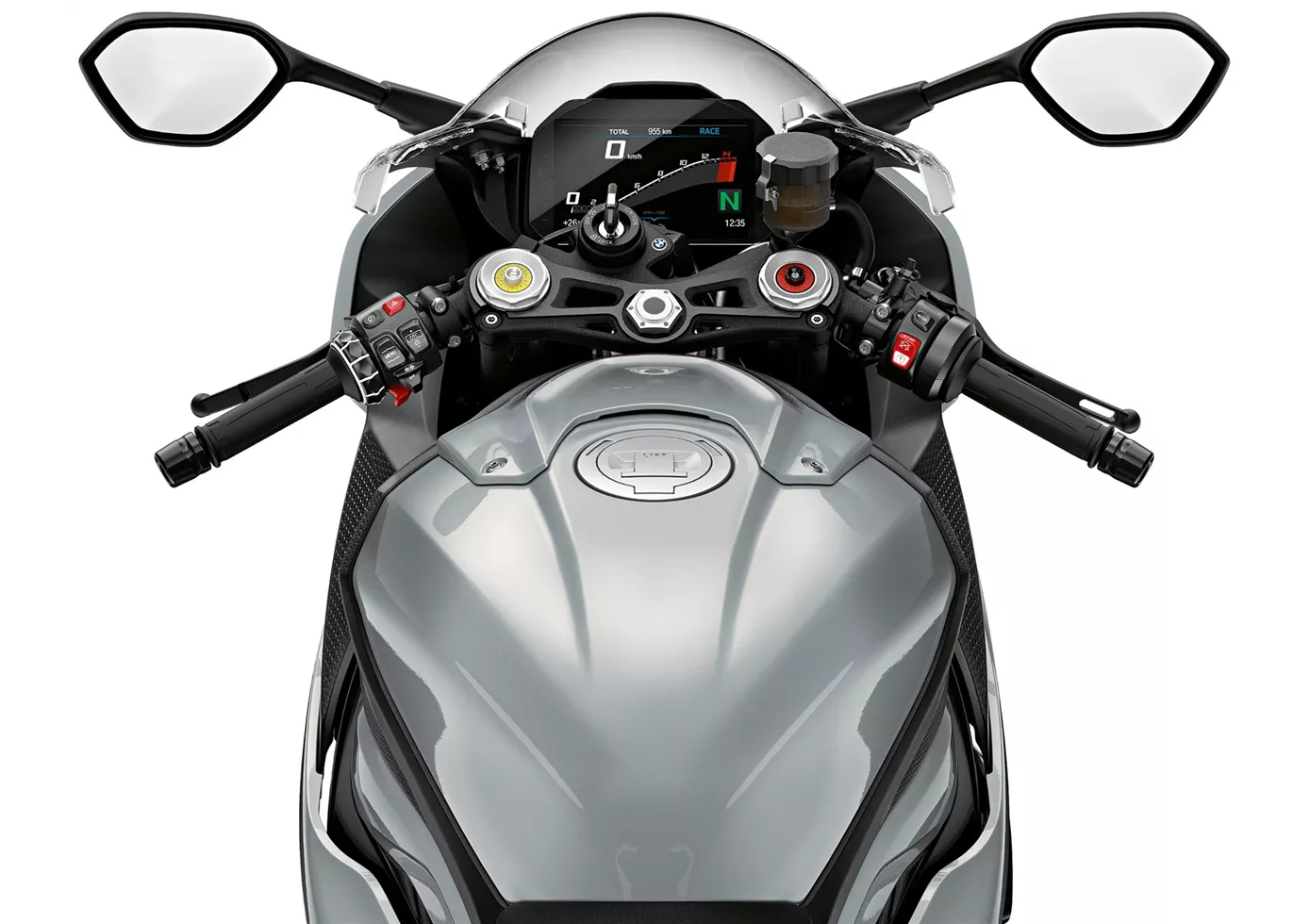
A real "all-rounder" superbike. The BMW knows how to play to its strengths both on the race track and on the country road. Thanks to variable camshaft control, the powerful engine is already convincing at the bottom end and accelerates harmoniously across the entire rev range, with plenty of power in every range. For the hobby pilot, the chassis certainly functions excellently in every situation, provides transparent feedback and offers many adjustment options. The seating position is sporty yet relatively comfortable. The electronics work very harmoniously without patronising the rider - TOP!
Kawasaki Ninja H2 2015

The Ninja H2 represents a milestone in motorbike history. It is not only packed with electronic innovations, but also offers completely new technologies in terms of engine construction and mechanics. This high-tech research object of a Japanese technology company is actually for sale and can also be ridden. Basically, it rides like a normal motorbike, only with considerably more power. At first, the engine response is a challenge, but speed freaks will find a way to ride and enjoy this fascinating motorbike.
Price Comparison Avarage Market Price BMW S 1000 RR vs Kawasaki Ninja H2
There are a few key differences between a BMW S 1000 RR 2020 and a Kawasaki Ninja H2 2015. In terms of price, the actual average price of a Kawasaki Ninja H2 2015 is about 21% higher. A BMW S 1000 RR 2020 experiences a loss of 430 GBP in one year and 140 GBP in two years of ownership. This is offset by a loss of 6,100 GBP and 5,200 GBP for a Kawasaki Ninja H2 2015. Compared to Kawasaki Ninja H2 2015 there are more BMW S 1000 RR 2020 bikes available on the 1000PS.de Marketplace, specifically 16 compared to 4. It takes less time to sell a BMW S 1000 RR with 68 days compared to 153 days for a Kawasaki Ninja H2. Since model year 2010 1000PS.de editors have written 135 reviews for the BMW S 1000 RR and 27 reviews for the Kawasaki Ninja H2 since model year 2015. The first review for the BMW S 1000 RR was published on 16/04/2008 and now has more than 4,000 views. This compares to more than 5,600 views for the first review on Kawasaki Ninja H2 published on 31/08/2014.


